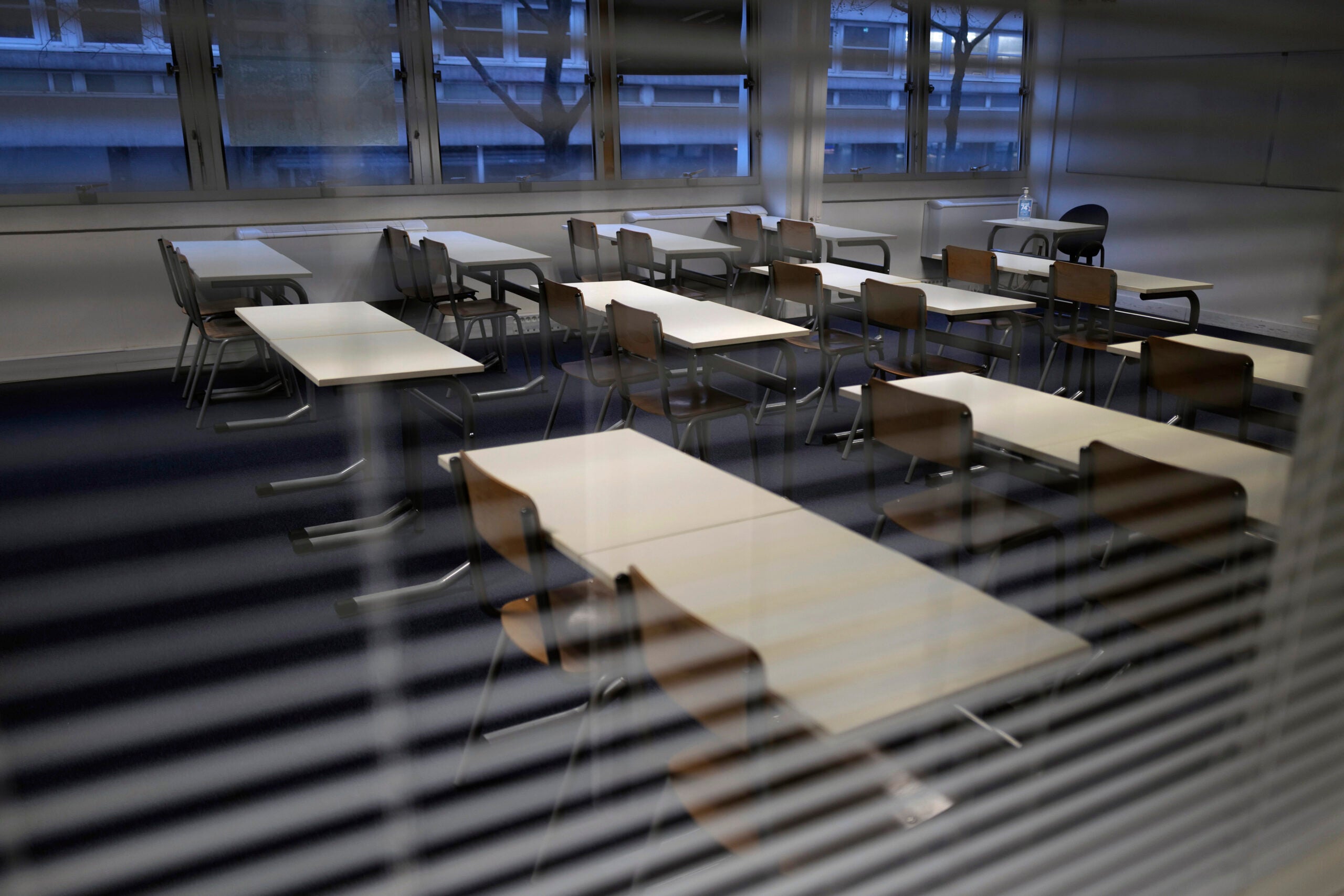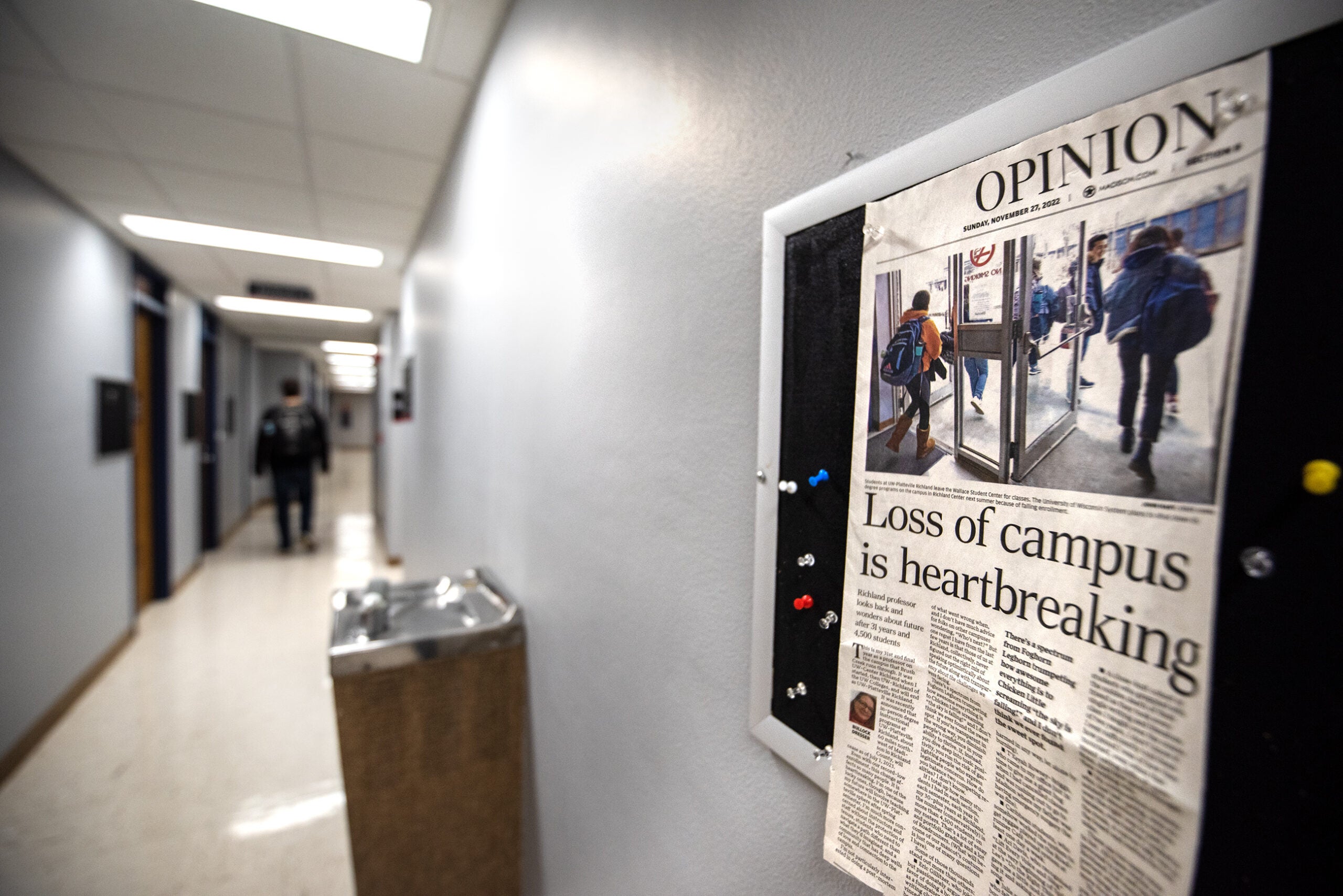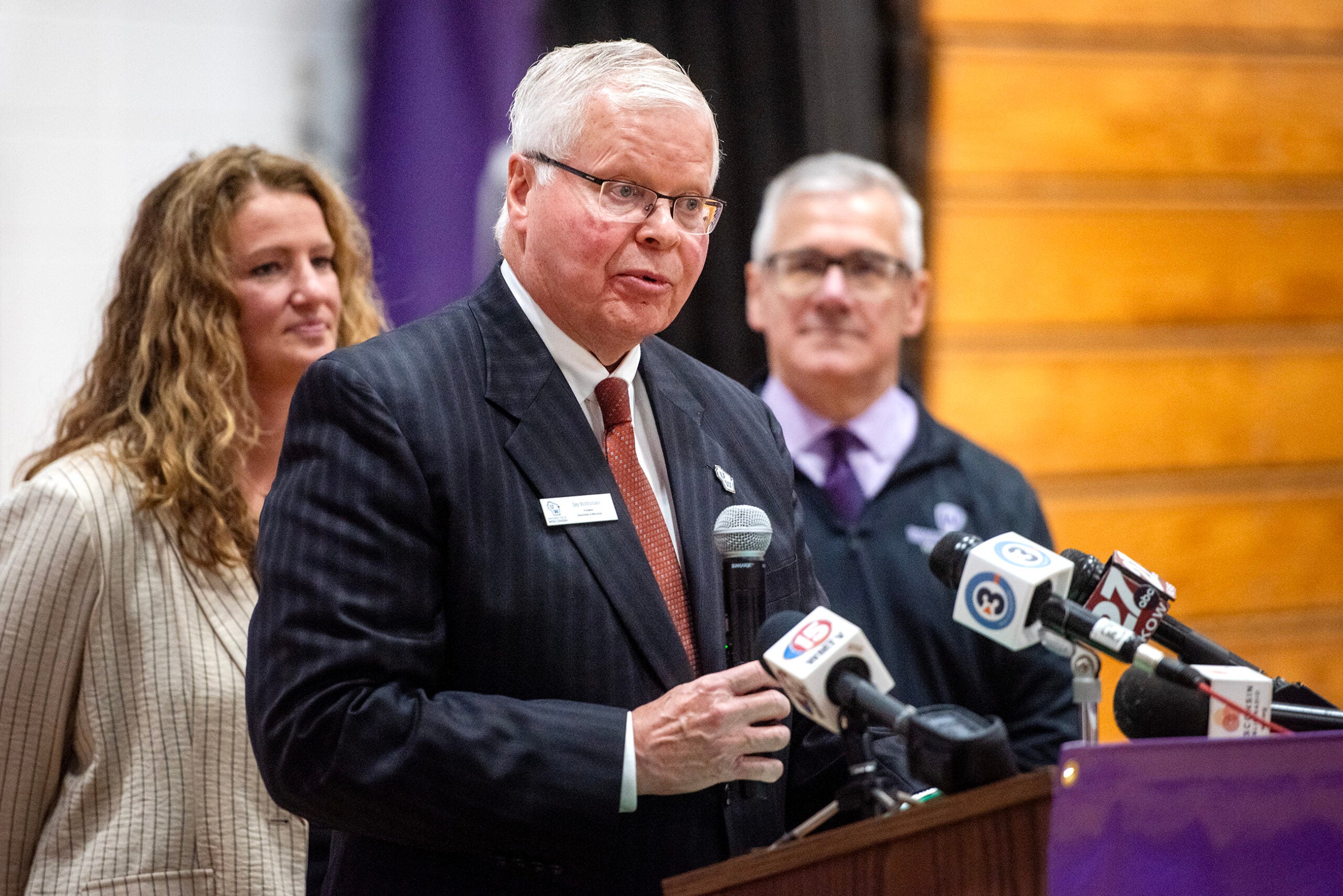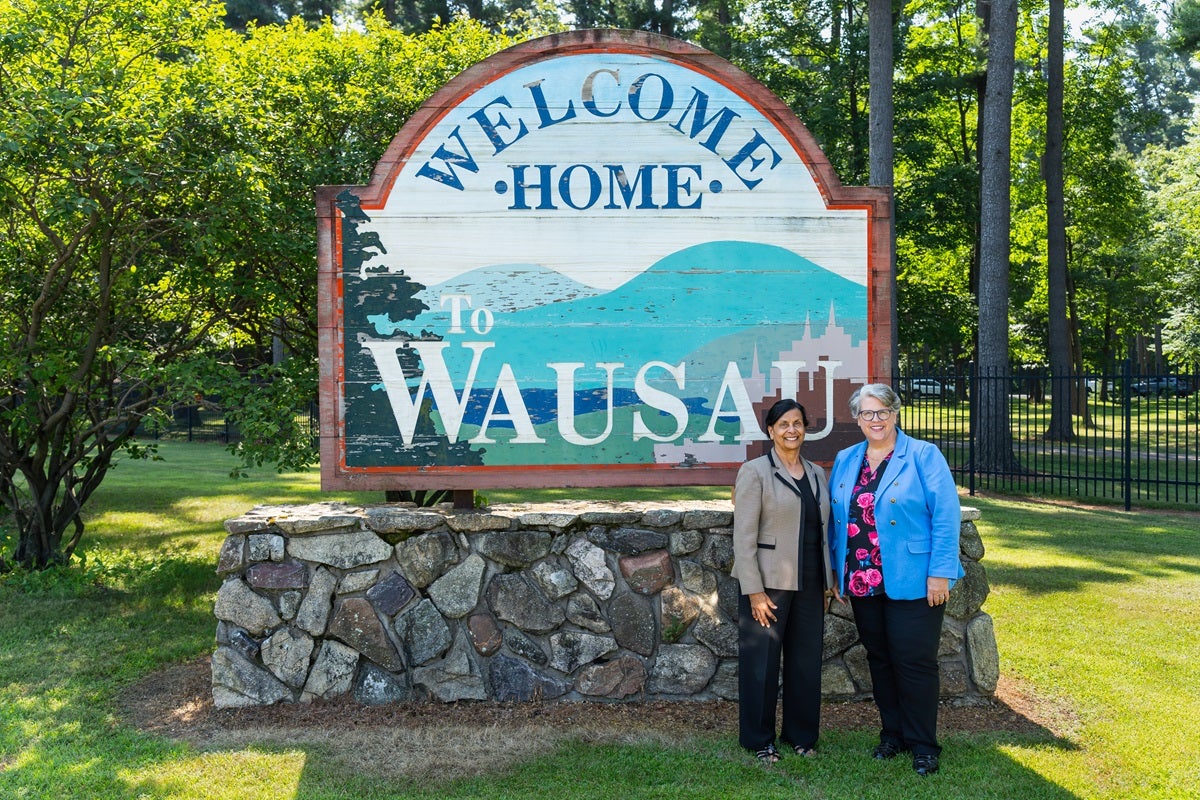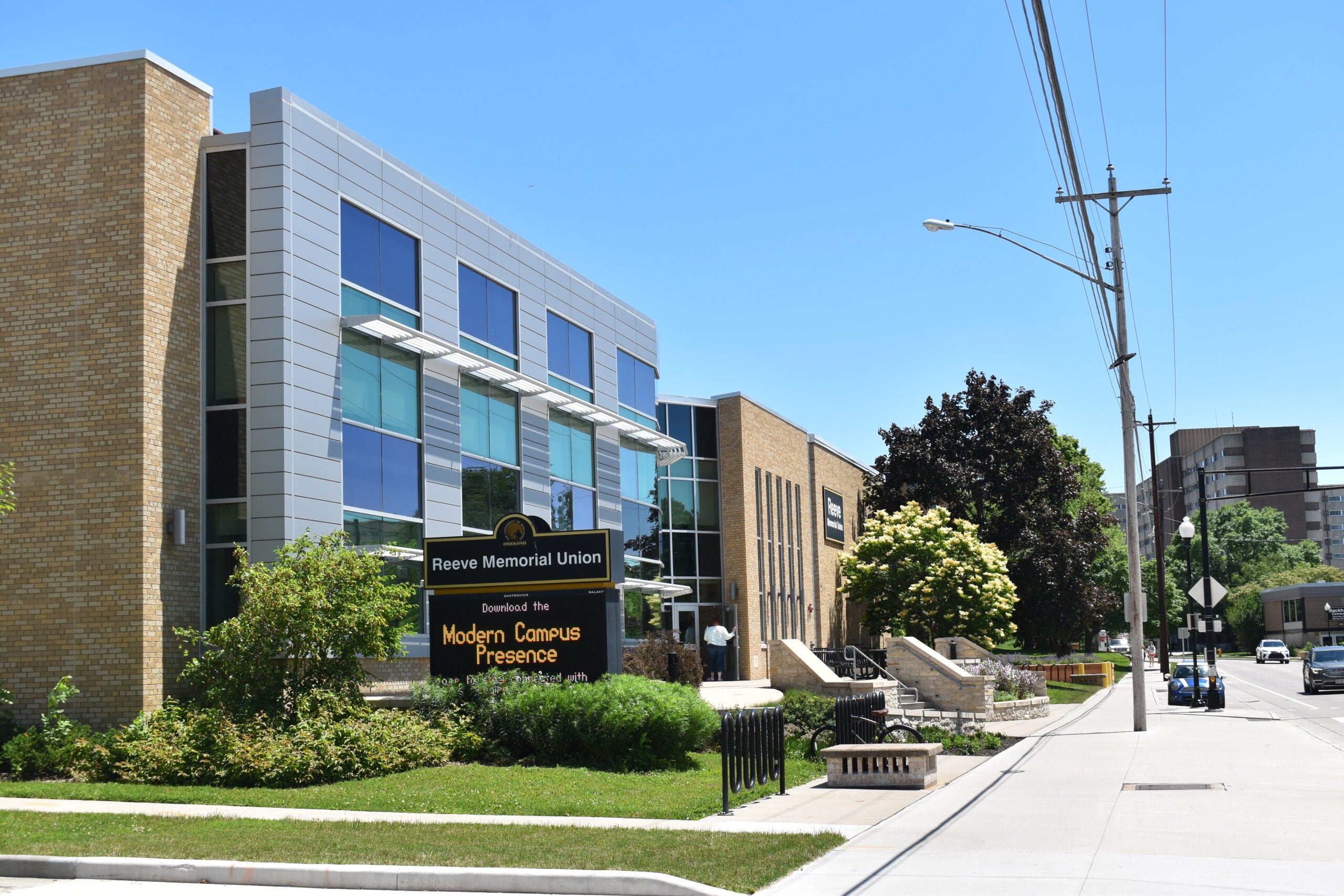A new analysis of funding for public higher education shows support for Wisconsin’s technical colleges ranks fifth in the nation, while support for state universities ranks 43rd.
The Wisconsin Policy Forum report compared funding from state and local taxes and tuition for two-year technical colleges and four-year University of Wisconsin campuses with those in other states using 2021 federal data.
It found technical colleges receive an average of $17,153 per full-time-equivalent student, which was the fifth highest in the nation when compared to other states. The national average for two-year colleges was $11,714 per student.
News with a little more humanity
WPR’s “Wisconsin Today” newsletter keeps you connected to the state you love without feeling overwhelmed. No paywall. No agenda. No corporate filter.
Four-year UW System universities received $15,079 per student, which ranked eighth worst compared with all other states. The national average for four-year universities was $17,733.
A major reason for the difference, according to the report, is technical colleges receive part of their funding via local property tax levies while UW System schools do not. Wisconsin Policy Forum Research Director Jason Stein told Wisconsin Public Radio that a decade-long freeze on in-state, undergraduate tuition increases is one of the main reasons UW schools fared worse than others in the nation.
“We know that for in-state tuition, our tuition growth has just been among the lowest in the nation now for the past decade, roughly,” Stein said. “The state has been very restrained about new spending for the UW system in recent years, even though the state budget has been flush.”
UW System tuition for residents was frozen by state lawmakers in 2013 and has mostly remained at those levels ever since. During the 2021-2023 state budget process, lawmakers gave tuition setting authority back to the UW System Board of Regents, but the board didn’t raise it until this year. On March 30, regents approved an average tuition increase of 5 percent.
In response to the new data, a statement from UW System President Jay Rothman said it’s discouraging that the state’s four-year universities are near the bottom in public funding.
“Wisconsin’s future depends on developing and attracting talent now, and the UW is on the front lines of educating and graduating tens of thousands of students,” Rothman said. “However, UW’s talent pipeline that helps sustain Wisconsin’s economic vibrancy is stressed at a time when it is needed more than ever to meet workforce needs.”
As for the high ranking for Wisconsin Technical College System schools, spokesperson Katy Pettersen told WPR the tech schools in Wisconsin often focus on manufacturing programs which are “the most expensive to offer.”
“We invest heavily in supporting our manufacturing base here in Wisconsin, and that’s incredibly expensive,” Pettersen said. “And it’s not just manufacturing, employers from all industries tell us that they need more people in their industries with more specific skills. So we’re also upskilling current employees, to give them the skills needed for the employers to continue advancing in their industry.”
Pettersen also noted the data comes from fiscal year 2021, when colleges in other states were facing budget cuts amid a wave of federal pandemic aid.
“In Wisconsin, in the technical college system, we did not have a massive budget cut in (the 2021-2023 state budget),” Pettersen said. “So, that certainly could have affected our top five ranking.”
When looking at all public funding of both technical colleges and state universities, the Policy Forum found Wisconsin was slightly higher than the national average after lagging in a 2020 analysis. All told, public higher education institutions in the state received $15,979 per full-time equivalent student in 2021, excluding pandemic aid.
That shift wasn’t due to a wave of new state or local tax dollars, but rather Wisconsin enrollment declining faster than the national average.
“We’re spreading the same amount of funding over fewer students in the state as a whole,” Stein said. “And that is what makes it look better.”
The data show enrollment across two-year tech schools and four-year UW campuses fell by an average of 5.4 percent between 2019 and 2021. Nationally, college and university enrollment fell by 3.6 percent. The declines in Wisconsin at specific institutions and system varied with UW-Parkside seeing a 17.8 percent decline during that period. UW-Madison and UW-Green Bay were the only universities to see enrollment grow between 2019 and 2021.
Enrollment fell fastest at the UW System’s two-year campuses during that span, with a decline of 32.1 percent. One of those campuses in Richland Center will end in-person classes July 1.
Wisconsin Technical College System enrollment fell by 10.3 percent between the 2018-19 academic year and the 2021-22 academic year.
The Forum report notes that public funding for student financial aid in Wisconsin has grown at a slower rate than in other states. At the same time, college enrollment rates for students graduating from state high schools has fallen, particularly among lower income students and students of color.
The UW System is expanding a popular UW-Madison tuition promise program that covers expenses not paid by financial aid for students from families making 62,000 per year or less. Governor Tony Evers included an additional $24,5 million for the initiative in his state budget proposal, but State Assembly Speaker Robin Vos, R-Rochester, has said Republicans are unlikely to provide the funding.
Wisconsin Public Radio, © Copyright 2026, Board of Regents of the University of Wisconsin System and Wisconsin Educational Communications Board.
